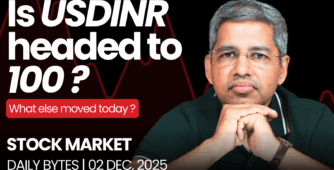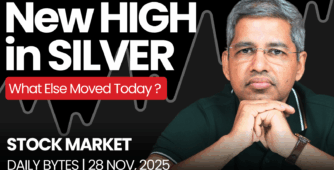
It’s not a particularly good day for the markets, but the markets did recover from their intraday fall. On an intraday basis, it looked like the bottom had fallen out, but in the second half of the session, markets made a spectacular recovery, giving traders a sigh of relief. We are not out of the woods yet, but it does seem like the market is experiencing bouts of buying every time it starts to dip. From that point of view, buying is still coming in at every level, and there is a possibility that we may see a short-term bottom soon, which is the expectation going forward.
The topic for today is the “Death Cross” threat for the markets. A Death Cross is a technical formation in charts, and we’ll dive deeper into this concept in the second half of the video.
Where is the market headed?
Market Overview
Now, let’s take a look at today’s market movements. As you can see from the chart, the markets dipped, took support near the previous lows, and recovered to close almost flat for the day, down by just 0.08%. There was no major collapse today, at least not on this particular day. However, going forward, much will depend on three key events this month: one, corporate results, two, US Presidential speech, and three, the budget. These three will play out in the next month, and the GDP numbers have already been discounted by the market. My sense is that the sharp fall we witnessed two days ago was likely a market reaction to the coming numbers, as markets tend to anticipate such events through leakages and insider information, which eventually gets absorbed by the market.
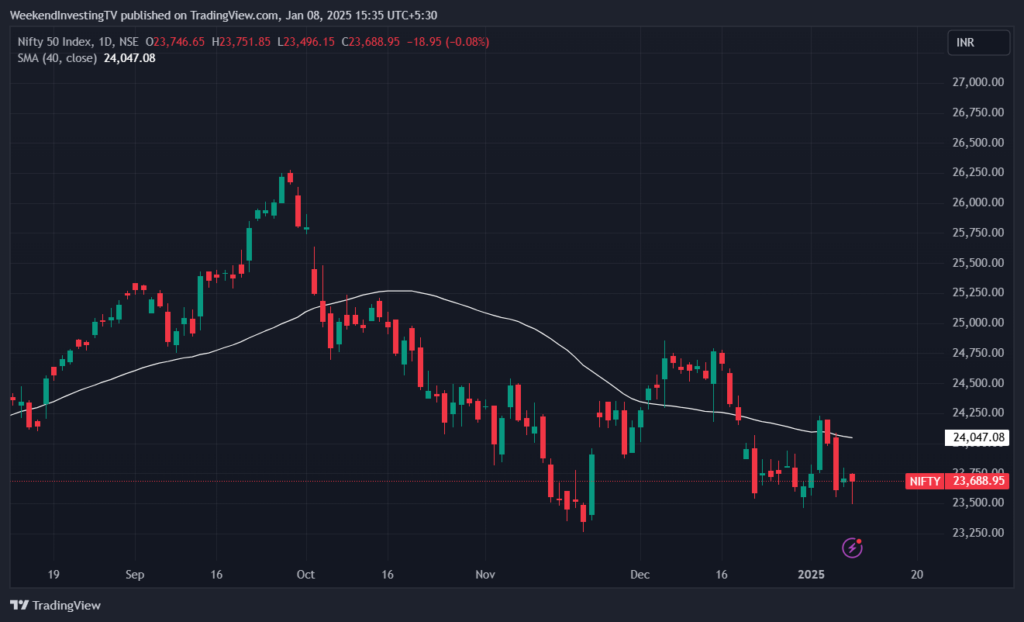
Nifty Next 50
For the markets to not have fallen today, despite the unexpected announcement of a major GDP number, shows that market participants are likely processing the information, and there is some stability here. On the other hand, Nifty Next 50 experienced a steeper fall, down by 0.8%. It didn’t stay near the previous day’s close but tested the previous low before recovering slightly. However, it still looks weak from a chart perspective.
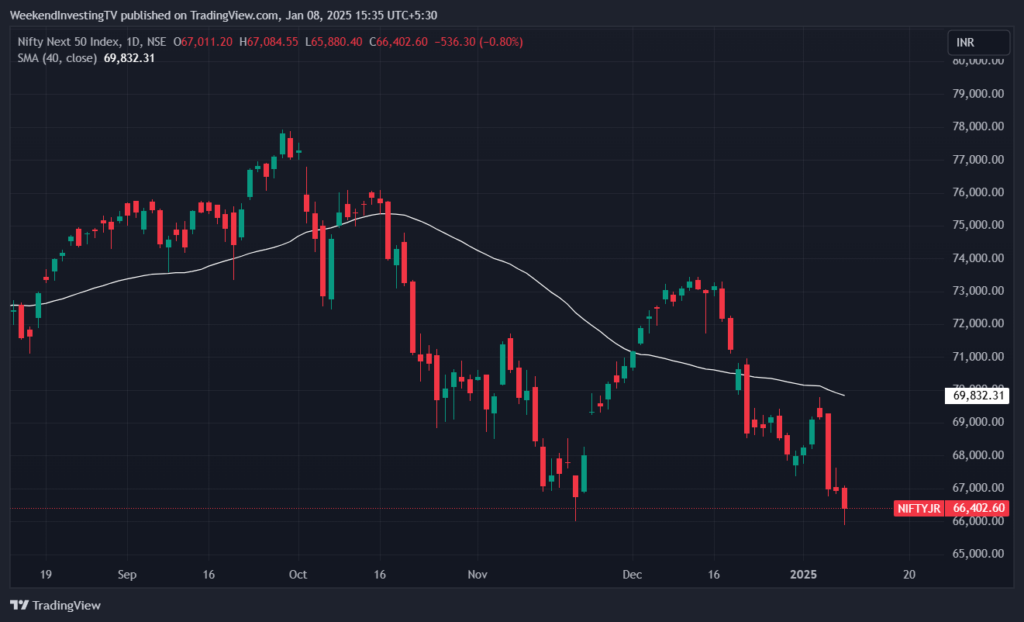
Nifty Mid and Small Cap
Similarly, the Nifty Mid Cap index lost 1%, and although there was some recovery, the gap is not yet filled, indicating the potential for further downside. The small-cap index also lost 1.38%, and the field remains open for it to drop further. Only a breakout above the high of the last two days would give us some confidence on the upside.
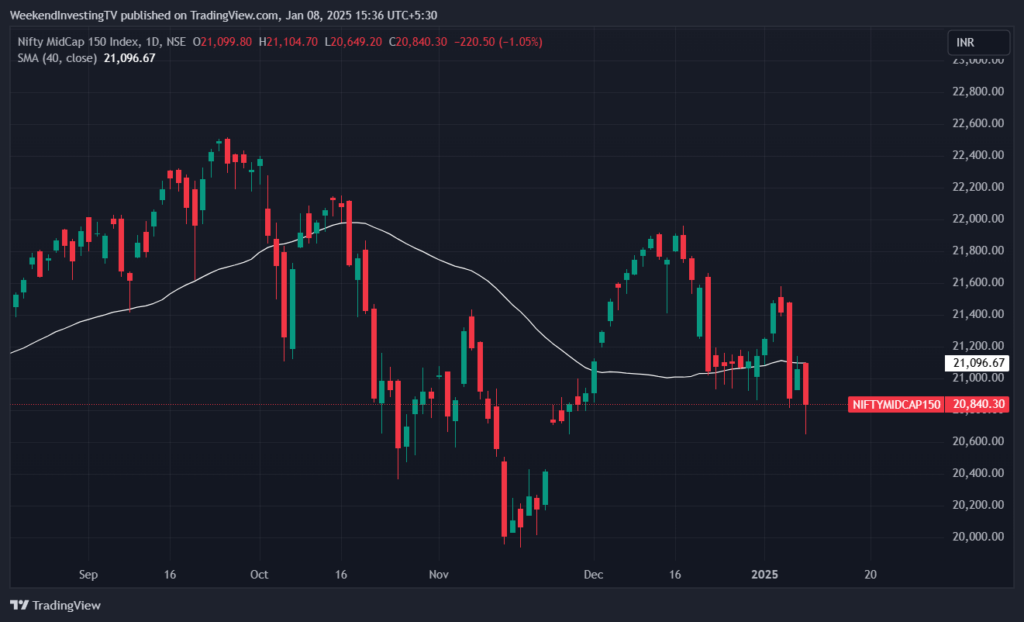
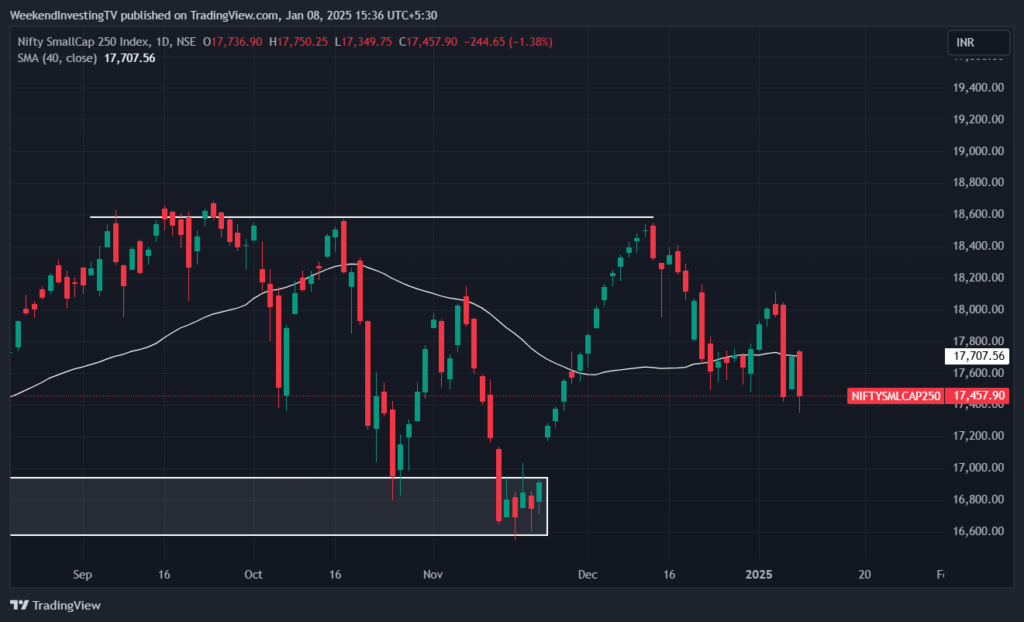
Nifty Bank Overview
Bank Nifty, which has crucial support near the 50,000 level, broke this support intraday but managed to close above it. For today, Bank Nifty miraculously saved a major level. If this level breaks convincingly, we could see a further decline of a few thousand points. Today, Bank Nifty was down by 0.73%.
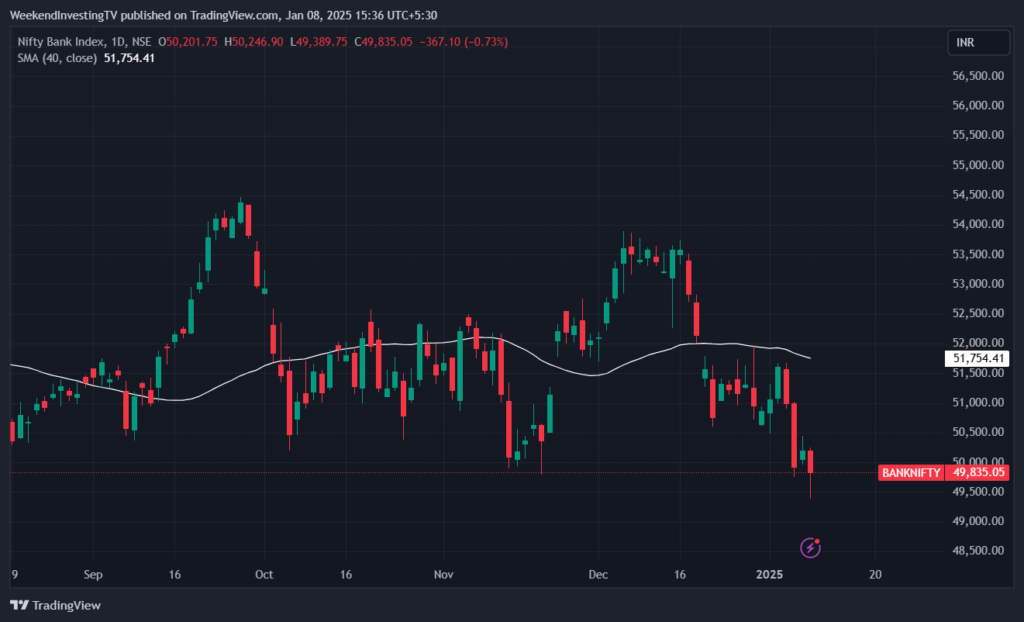
Advanced Declined Ratio Trends
In terms of market momentum, there were 367 declines compared to 127 gains in the top 500 stocks.

Nifty Heatmap
Let’s look at some individual stocks. Reliance, the leader of the bulls today, had a strong performance, along with ONGC, which benefited from the rising crude oil prices. ITC also performed well after a tough few sessions. TCS was up nearly 2%, but there was no relief for stocks like ICICI Bank, HDFC Bank, State Bank of India, Bajaj Auto, UltraTech Cement, Trent, Mahindra & Mahindra, L&T, and Sun Pharma, all of which lost ground. Asian Paints had a slight gain of 1.82%.
The Nifty Next 50 landscape was even more bearish, with stocks like United Spirits, JSW, Siemens, HAL, Zomato, Divis Lab, Indigo, REC, and PFC all losing ground. Only a few stocks like Bajaj Holding, Gas Authority, LTIM, Lodha, and Bank of Baroda managed to show small gains
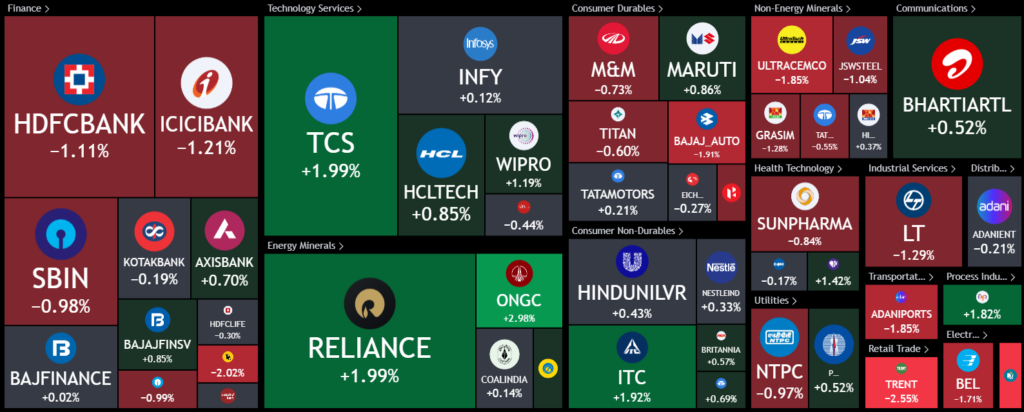
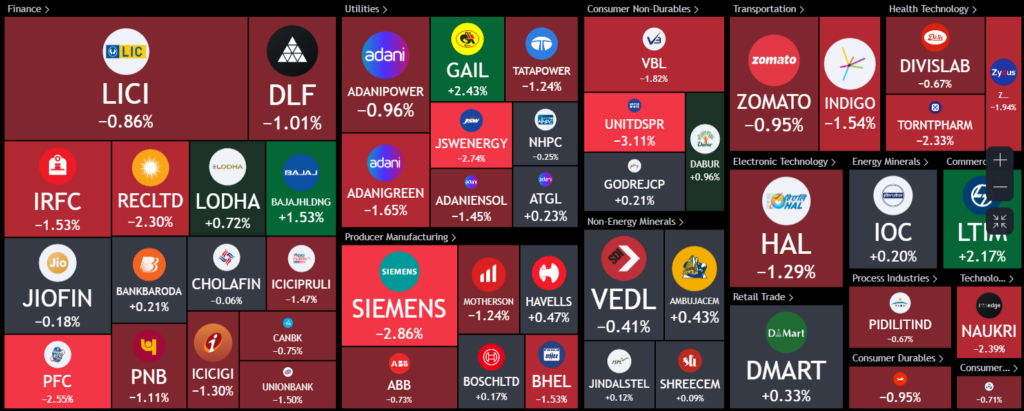
Sectoral Overview
In terms of sectoral trends, Pharma was the worst hit, down by 0.9%, followed by PSU banks, which were down by 0.8%, and Bank Nifty, which lost 0.7%. Metals also lost 0.7%, while private banks were down by 0.5%. Private banks have been underperforming for the last 12 months, which tells you how flat they have been. Autos lost half a percent today, and other sectors showed minor declines of 0.2-0.3%. Surprisingly, FMCG stocks did not fall today. Typically, the weakest parts of the market tend to fall the most, but today, FMCG showed some resilience, rising by 0.4%. Over the last 12 months, FMCG has only gained 0.5%, so this might signal that FMCG is bottoming out despite the overall market decline. This shows the importance of sector rotation in your portfolio, to ensure that you stay invested in stronger sectors and stocks.
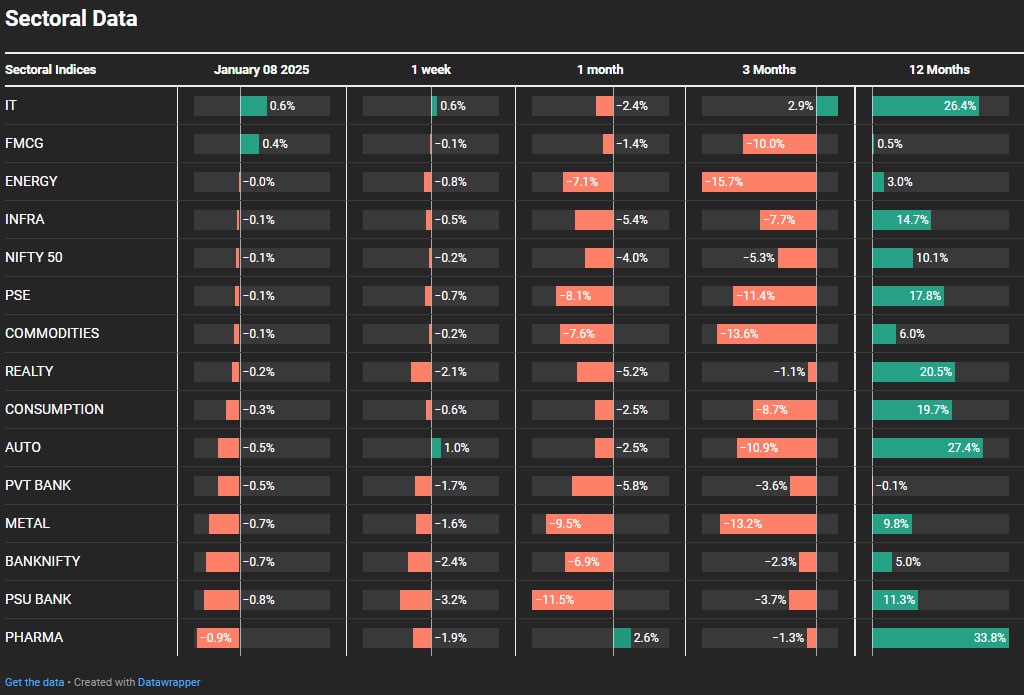
Sectors of the Day
Nifty Oil & Gas Index
Oil and Gas was the standout sector today, up by 1.5%. This sector has bucked the trend in the last two sessions, with stocks like Oil India, ONGC, Castrol, Gale, Reliance, BPCL, and HPCL all posting strong gains of more than 2%.
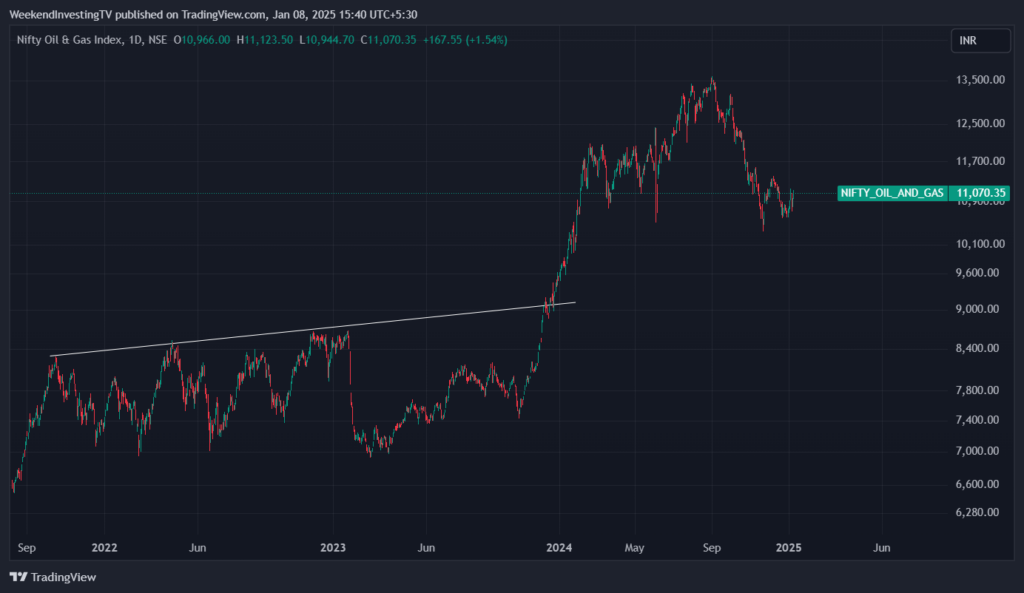
Lowest Momentum Stock
IndusInd Bank
Regarding the Momentum Score report, which tracks the performance of stocks based on their momentum, if you upload or enter your stocks into the Momentum report on the Weekend Investing site, it can help you identify stocks with weak momentum, ensuring that your portfolio stays clean of underperformers.
For example, IndusInd Bank has a momentum score of just 1.3 out of 100 in our study, meaning none of our portfolios would have bothered with this stock throughout the year. Over the last 12 months, IndusInd Bank has declined by 40%, while the Nifty Mid Cap index has gained 23%. This is a perfect example of how momentum-based strategies protect you from weak stocks.
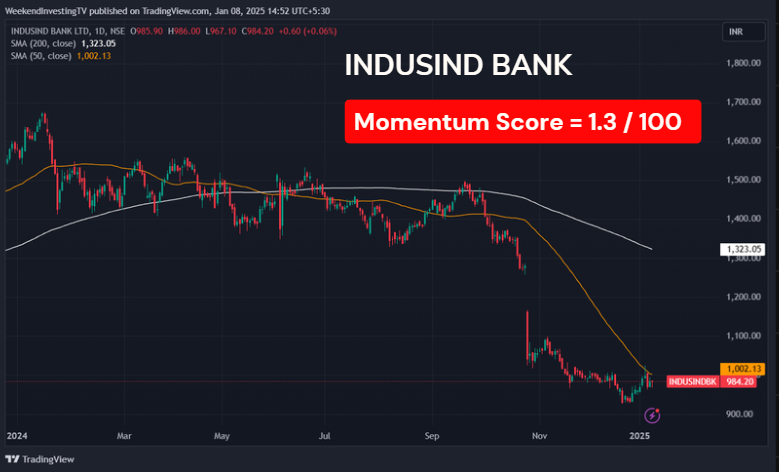
Story of the Day : Death Cross Threat for Markets
Death Cross”. Some of you may already be familiar with this term, while others may be new to it. The Death Cross occurs when the 50-day moving average crosses below the 200-day moving average. This chart shows the S&P 500, where the 50-day moving average (the shorter one) crosses below the 200-day moving average (the longer one). This is considered a bearish signal because the 50-day moving average is more responsive to recent price changes, and when it falls below the 200-day moving average, it suggests that the market may continue to move lower. While there’s no certainty with this signal, it does increase the probability of a further downtrend.
For example, the Nifty 50 currently has its 200-day moving average at 23,923, while the 50-day moving average is at 24,088. These two averages are very close to each other, and there is a possibility that Nifty 50 may soon witness a Death Cross. On the other hand, the Nifty Junior index has already experienced a Death Cross.
In the past, the Death Cross has been associated with market declines, though not always in a predictable manner. For instance, during the Covid crash in 2020, the Death Cross occurred, and the market did decline further but then recovered. Similarly, in April 2022, a Death Cross happened, and the market took a few months to recover. In June 2015, a Death Cross appeared, and the market continued to fall for about a year before recovering. However, in some cases, the Death Cross did not lead to a prolonged downtrend, like in 2013 when the market bounced back quickly.
Over the last 30 years, the volatility in the market has decreased, and the distance between the 50-day and 200-day moving averages has shrunk. The movements have become more limited, which is why it’s important to understand the strength and weakness within different sectors and indices.
Currently, in the Nifty 50, 54% of the stocks have already crossed into a Death Cross. In the Nifty Junior, 33% of the stocks are in Death Cross, while mid-caps and small caps are at 33% and 34%, respectively. This shows that a significant portion of stocks in these indices are showing weakness.
Looking at sectors, Pharma is relatively strong, with only 10% of its stocks in Death Cross, while FMCG has 33% of its stocks in Death Cross. Autos are somewhere in the middle, with about 20% of stocks in Death Cross. This gives you a sense of where the pain is concentrated in the market and where the relative strength lies.
So, should you be worried about the Death Cross? Not necessarily. It’s just a signal of probability and caution. If you are following a trend-based strategy, you could wait for a better signal before investing. It can also help you identify stronger sectors and indices to focus on, and it can guide you in managing weaker stocks in your portfolio.
The key takeaway is that while the Death Cross can be a warning, it’s not an absolute certainty, and using it alongside other strategies can help you navigate the market more effectively. If you hold stocks that have crossed into a Death Cross, there might still be value in them due to the recent fall, but from a trend momentum perspective, it may be wise to avoid holding them as they could continue to decline without any clear stop-loss strategy.


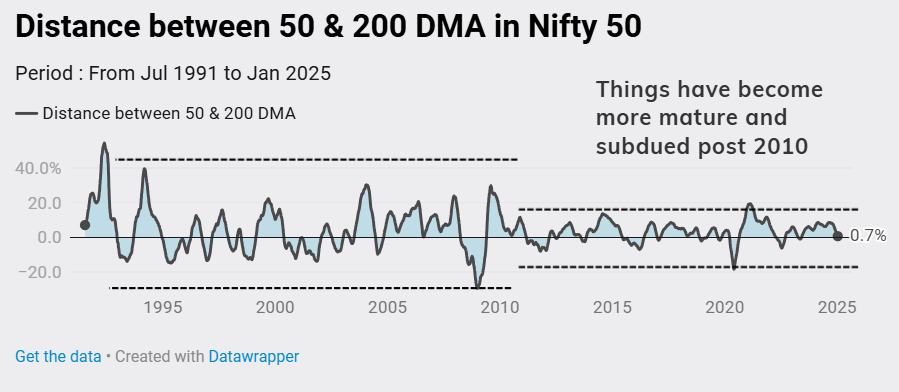
WeekendInvesting launches – PortfolioMomentum Report
Disclaimers and disclosures : https://tinyurl.com/2763eyaz

